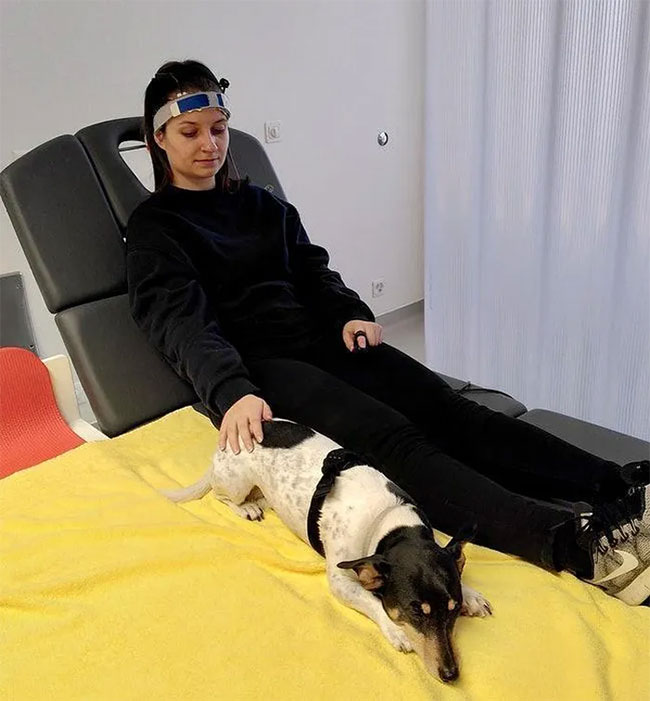Everyone knows that dogs provide profound benefits for our mental health. However, a recent study shows that these animals can also positively impact our brains in surprisingly different ways.
Scientists have analyzed the effects of petting dogs on the prefrontal cortex, revealing that this action may enhance animal-assisted therapy methods for humans. The findings were published in the journal PLOS ONE.
The prefrontal cortex plays a crucial role in processing emotions and regulating tasks related to executive functions, such as attention, maintaining working memory, and problem-solving. The researchers aimed to understand how this part of the brain would respond when interacting with dogs, one of the most popular pets in animal-assisted therapies.
Rahel Marti told Inverse: “We decided to start this study because very few people know about the brain’s response to interaction with animals.” Marti is the lead author of the study and a researcher at the psychology department of the University of Basel.

Dogs have lived alongside humans for thousands of years. Over this time, we have domesticated and transformed them from fearsome wild wolves into obedient house pets. Dogs are also one of the most varied species in the animal kingdom, thanks to our breeding activities. However, a new study scanning the brains of dogs shows profound changes when they live alongside humans.
Marti’s research team analyzed the prefrontal cortex activity of 21 volunteers when exposed to dogs or stuffed animals compared to neutral activities like staring at a blank wall. The researchers measured their brain activity using a method called near-infrared spectroscopy, a non-invasive way to calculate oxygen saturation in the brain. This method has advantages over other brain imaging techniques like fMRI, as participants can sit in a normal room and feel more comfortable.
During the stuffed animal activities, the researchers placed them on the participants’ laps for viewing, after which they could pet the toy. Similarly, dogs would lie on the couch, touch the participants, and in the next instance, participants were allowed to pet the animal.
The study yielded two significant findings that provide insights into the impact of dogs on the human brain.
First: Brain activity in the prefrontal cortex increases when participants are in closer contact with stuffed animals or live dogs.
Marti stated, “Our results confirm previous studies linking closer interactions with animals or controlling stimuli to increased brain activation.”
However, the second finding is even more intriguing: Study participants experienced higher brain activity when petting dogs compared to interacting with stuffed animals. This aligns with previous research on horses and cats, but this is the first study to document an increase in human brain activity when interacting with dogs.
“The novelty here is that we considered different interactions: watching, feeling, and petting,” Marti added.
While brain activity decreased between the first and second interactions with stuffed animals, the opposite occurred when volunteers interacted with dogs—a result that surprised scientists. Although researchers have yet to definitively explain why brain activity increases over time when petting dogs.

Humans are more likely to think about a dog’s emotions when petting them.
Marti remarked, “Our explanation is that participants formed an attachment bond with the dog.”
This bond may lead participants to invest emotionally in the animal, resulting in greater attention—indicated by higher activity in the prefrontal cortex—when petting a dog compared to a stuffed animal. Previous studies have shown that animals can enhance attention in humans, likely by strengthening their emotional attachment—for example, people are more likely to think about a dog’s feelings when petting them.
Marti explained, “We believe that engagement with emotions may be a fundamental mechanism of brain activation in interactions between humans and animals.”
The article suggests that petting a dog may engage our emotions and attention in ways that stimuli like stuffed animals cannot. Dogs may help patients who struggle with attention in social situations.
Marti stated, “Our results could align with therapy for patients experiencing diminished motivation, attention, and social communication functions.”
Further research will be needed to confirm and build upon Marti’s study before dog therapy can assist individuals with attention deficits. Future studies may focus on whether all participants benefit from enhanced emotional interaction and attention when petting puppies or if this finding applies only to those who already like dogs.


















































